Authors: Ramesh C, CTO
A Force to be reckoned with!
Artificial intelligence (AI) is a high-powered and influential area of computer science, with the ability to radically rebuild the practice of medicine and an enormously impactful delivery of healthcare.
What is AI? Simply put, AI refers to the science and engineering of making intelligent machines, through algorithms or a set of rules, which the machine follows to mimic human cognitive functions, such as learning and problem solving. AI systems have the potential to anticipate problems or deal with issues as they come up and, as such, operate in an intentional, intelligent and adaptive manner. AI’s strength is in its ability to learn and recognise patterns and relationships from large multidimensional and multimodal datasets; for example, AI systems could translate a patient’s entire medical record into a single number that represents a likely diagnosis. Moreover, AI systems are dynamic and autonomous, learning and adapting as more data become available.
In recent years, we have witnessed the integration of Artificial intelligence (AI) and Machine learning (ML) in various industries and healthcare is no exception. Digital healthcare offers a huge range of possibilities and may improve the quality of patient care. The traditional paradigm of clinical history, examination, differential diagnosis, and treatment may be improved by tools such as machine learning, mobile applications and sensors, wearables, and telehealth. The recent pandemic has accelerated the move towards this future, COVID-19 has only enhanced this impact and one of the areas that has seen significant transformation
is healthcare, especially with telemedicine emerging as a critical tool for providing remote healthcare services to patients in the last mile populations.
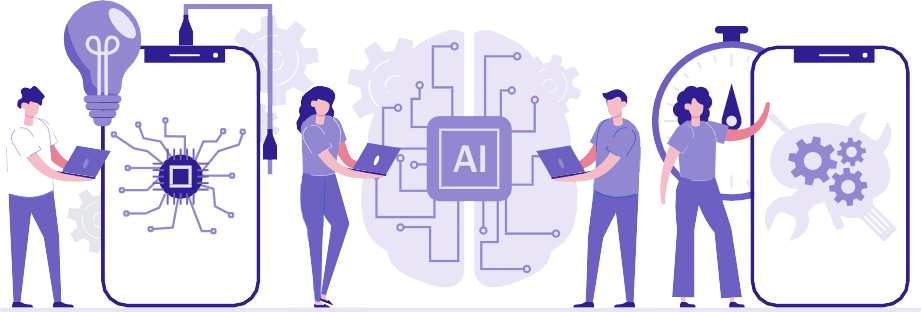
The Paradigm Shift
The application of technology and artificial intelligence (AI) in healthcare has the potential to address
supply-and-demand challenges. The increasing availability of multi-modal data (genomics, economic,
demographic, clinical and phenotypic) coupled with technology innovations in mobile, internet of things
(IoT), computing power and data security herald a moment of convergence between healthcare and technology to fundamentally transform models of healthcare delivery through AI-augmented
healthcare systems.
AI-ML is changing the landscape of healthcare by enhancing digital health and telemedicine services. In
this blog post, we will explore how AI-ML is transforming healthcare, specifically through NLP &
chatbots, AI-assisted disease screening, differential diagnosis, clinical decision support systems and
analytics of Electronic Medical Records (EMRs).
NLP and Chatbots
Natural language processing (NLP) is a subfield of AI that enables computers to understand, interpret, and generate human language. NLP based chatbots have significant potential in healthcare, as they can be used to improve communication between patients and healthcare providers. Chatbots can provide patients with accurate and relevant
information, helping them make informed decisions about their health. This especially plays a key role in the management of lifestyle diseases such as Obesity, diabetes, hypertension & heart disease. Imagine a patient seeking advice on diet & lifestyle
mgmt. being greeted by a friendly chatbot that guides based on clinically validated protocols without a health provider’s intervention. Additionally, chatbots can triage patients, helping to reduce wait times and reduce the burden on healthcare professionals. With significant advancements in NLP especially with advanced language models such as ChatGPT, GPT-3 from OpenAI and LaMDA from Google; the world of NLP is here to stay and Telemedicine only stands to gain immensely from this.
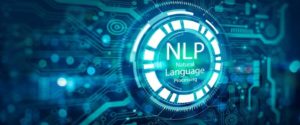
AI-assisted disease screening
AI-ML can assist in screening for various diseases such as cataract, anaemia, malnutrition, maternal health care and infant mortality. For example, AI prediction models can analyse eye images to identify early signs of cataract as well as help screen Anaemia by looking closer at the palpebral conjunctiva. In underserved communities, where access to healthcare is very limited, this automated disease screening
can be a boon and help prevent severe disease progression and even deaths. Similarly, ML can identify patterns in malnutrition and maternal healthcare, making timely predictions of childbirth outcomes and related complications. This helps to improve the quality of care and reduce maternal & infant mortality rates. An AI-ML based screening model used in Telemedicine amplifies the impact, in terms of early detection of disease & preventive healthcare especially in hard-to-reach remote communities.
Differential diagnosis
Differential diagnosis is the process of identifying a patient’s medical condition by comparing their symptoms with those of other possible conditions. This process can be challenging, as many diseases have similar symptoms. AI-ML can help with this process by analysing patient data and identifying patterns that are associated with specific diseases. This can help healthcare professionals arrive at an accurate diagnosis more quickly, leading to faster treatment and better outcomes for patients. This can also serve as a “effective eye for blind spots” in medical diagnosis and help physicians arrive at a more accurate diagnosis.
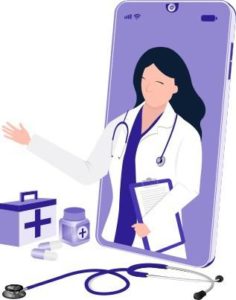
Clinical decision support systems
Clinical decision support systems (CDSS) are computer based tools that provide healthcare professionals with information and knowledge to assist with decision-making in patient care. AI-ML can enhance the capabilities of CDSS by providing real-time analytics and personalized recommendations based on patient data. For example, AI algorithms can analyse a patient’s EMR and recommend specific treatments based on the patient’s medical history, symptoms, and other factors.
Analytics of EMRs
EMRs are digital records of patients’ medical histories, treatments, and outcomes. AI-ML can analyse these records to identify patterns and trends that can help healthcare providers make more informed decisions. For example, analytics of EMRs can help identify disease seasonality patterns and predict outbreaks, enabling healthcare providers to prepare for potential public health crises. Additionally, analytics of EMRs can help
identify high-risk patients/societies who may benefit from preventative interventions. This helps deliver focused & timely interventions that lead to better health outcomes & lower healthcare costs.

Building effective and trusted digital healthcare systems
In conclusion, AI-ML is transforming healthcare by enhancing digital health
and telemedicine services. However, there are also challenges associated with AI-ML when dealing with huge volumes of patient data. Patient data privacy & confidentiality become key aspects to be considered when building software systems. There are several laws & regulations such as HIPAA that
help moderate this and protect patient interest, while still enabling delivery of quality healthcare. As AI- ML continues to evolve, we can expect significant improvements in healthcare delivery and outcomes.
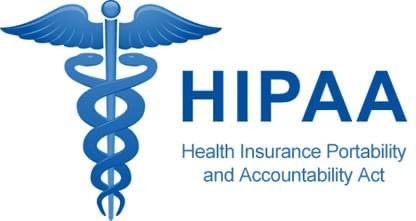
AI today, and in the near future…
At Intelehealth, we constantly leverage advances in technology to build better digital health solutions that are focused on serving the underserved communities. With this we help to bridge the inequities in healthcare and strive to produce better patient outcomes!
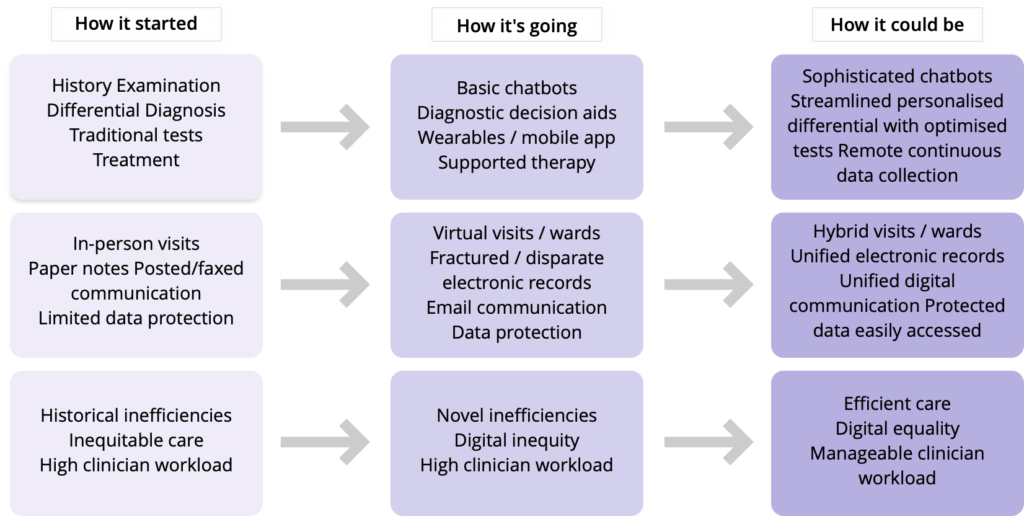
Digital health: how it started, how it is going and how it could be. Three panels presenting traditional care (‘How it started’), current care (‘How it is going’) and a possible future care (‘How it could be’) paradigm.



